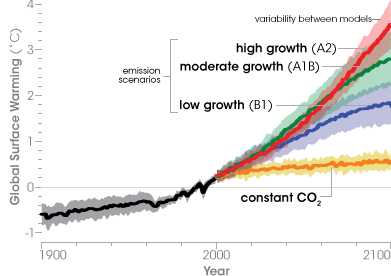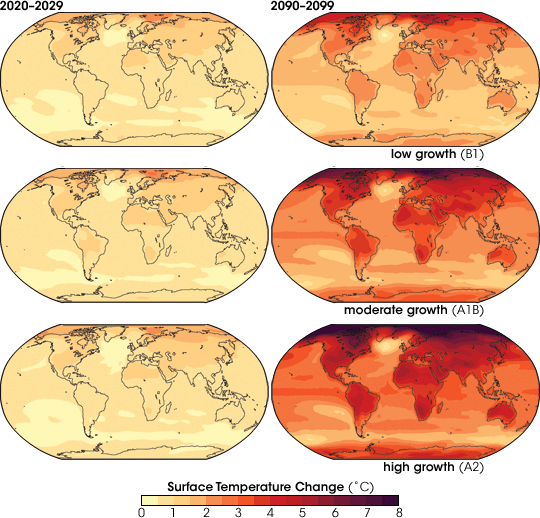with 2 comments
by Scott Mandia, Global Warming -- Man or Myth? blog, January 17, 2011
In a few recent conversations with press contacts it has become clear that there is confusion regarding climate sensitivity. More specifically, the confusion is about equilibrium sensitivity vs. transient sensitivity. I will try to set the record straight here.
Climate sensitivity is the expected increase in equilibrium global temperature due to a doubling of pre-Industrial Revolution CO2 concentrations from 280 ppm to 560 ppm. According to the IPCC (2007) and a number of other studies, the range of expected temperature increases due to a doubling of CO2 falls between 2 °C and 4.5 °C (3.6 °F and 8.1 °F) above pre-IR values with 3 °C (4.8 °F) the most likely. The exact wording from IPCC is:
“Climate sensitivity is likely to be in the range 2 to 4.5 °C with a best estimate of about 3 °C, and is very unlikely to be less than 1.5 °C. Values substantially higher than 4.5 °C cannot be excluded,…”
The confusion occurs because many people believe that the moment CO2 levels reach 560 ppm the climate will be about 3 °C warmer. No. It takes decades for the climate to catch up. The value of 3 °C also assumes that CO2 concentrations will remain at that constant level until the climate catches up. Doubtful.
Transient climate sensitivity is what most people are thinking about when describing changes in global mean T due to increasing CO2. Simply put, the transient sensitivity is the change in T at the moment CO2 levels reach 560 ppm. According to the IPCC (2007):
It is very likely larger than 1 °C (1.8 °F) and very unlikely greater than 3 °C (4.8 °F).
The reason it takes such a long time for equilibrium is that the ocean takes up most of the extra heat that increased CO2 is causing and the ocean releases this heat very slowly. Additionally, CO2 remains in the atmosphere for many years and continues to trap heat. For these reasons, one often hears that “there is about 0.6 °C (1 °F) warming still in the pipeline even if we stop adding CO2 today.”

- Oceans Take Up Most of the Heat (Cook, 2010)
Unfortunately, we are increasing our CO2 emission rates thus trapping more and more heat which one can see in the upward trend in ocean heat content.

- Ocean Heat Content Increasing (NOAA, 2010)
Consider a cup of hot coffee that is cooling over time. It cools because it is releasing heat into the air above but it takes time for all of the “extra” heat in the coffee to be fully liberated. However the better analogy is the one where the coffee (ocean) is gaining heat faster than it is losing heat. The ocean to atmosphere heat pipeline is getting larger and larger.

Heat Released Takes Time - It is Not Instantaneous
So what temperature changes are expected down the road? The two graphics below from the IPCC (2007) show projected changes in T following various CO2 emission paths. Sadly, we are currently on the high emission path.

IPCC Projected T Changes for Various Emission Scenarios

IPCC Projected T Changes for Various Emission Scenarios
Link: http://profmandia.wordpress.com/2011/01/18/clearing-up-the-confusion-about-climate-sensitivity/#more-1191






